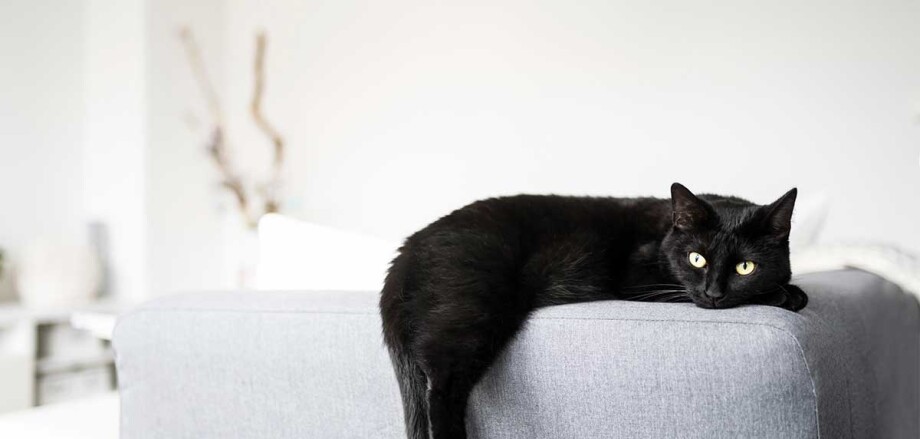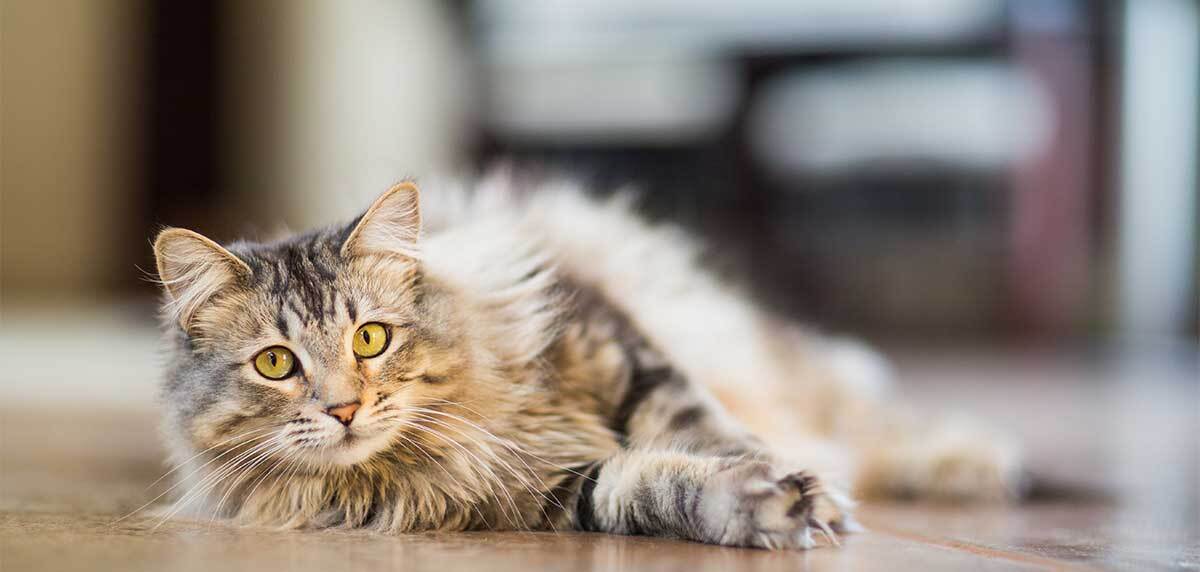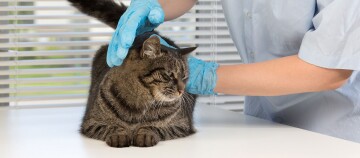Cat neutering – what you should know
01.01.2024 - Reading time: 8 minutes

Read here when and why a castration or sterilisation makes sense.
Whether your cat lives in a flat or has a garden and can go outside totally freely, the question of sterilisation or castration will certainly arise. Unless you want your cat to have a litter, it is recommended that you have her neutered at an early stage. Your tomcat, who loves to spend his nights outdoors, won't be involved in as many fights if he’s neutered.
What’s the difference between spaying and castration?
You’ve probably already heard of spaying and castrating cats, but you may not know exactly how the two operations differ. It is important that you are well informed so that you can make the best decision for your pet and yourself.
Castrating a female cat
Castration of a female cat is known as an ovariectomy. This is carried out at the vet’s under anaesthetic following a pre-operative visit. The cat should generally be taken to the veterinary clinic in the morning and leave in the afternoon. The operation involves removing the ovaries through a small incision, which is then closed with absorbable stitches. The operation doesn’t last long and the act is final. Your little kitty will no longer be able to have kittens. If the vet also removes the cat’s uterus, this is called an ovariohysterectomy. In this case, the operation is more extensive and your little companion will take a little longer to recover.
Castrating a male cat
Castration of male cats also takes place under anaesthetic and after a visit to the vet to check the cat’s general health. During the operation, the vet removes the cat’s testicles after making an incision in the scrotum. Stitches are not usually necessary, as healing will take place on its own. Your cat should be back to normal in no time.
Sterilising a female cat
If you decide to have your female cat sterilised, she will keep her genitals. The aim of the operation is simply to eliminate the reproductive capacity by ligating or cutting the fallopian tubes. Some vets advise against it because the symptoms of being on heat still persist.
Sterilising a male cat
As with female cats, the male cat’s sexual organs are preserved during sterilisation. The vet only cuts the vas deferens so that sperm can no longer pass through. As the production of sex hormones is unchanged, cats retain their sexual urges, leading them, for example, to mark their territory. Vets often advise against this operation, bearing in mind that un-neutered cats have a much shorter life expectancy. They are often the victims of road accidents and injuries inflicted by other male cats.
How much does cat neutering cost?
For female cats, the cost is between £50 and £100, while castration of a male cat costs £40 to £80. Help to cover the cost of cat neutering is available to certain people in need. Cats Protection has a neutering scheme meaning you could get your cat neutered and microchipped for £10. Some places also offer free neutering. You will need to do some research to find places local to you. Most veterinary clinics offer payment plans to their customers.
When should you sterilise or castrate your cat?
There are several criteria to take into account when determining the age at which a cat should be sterilised. Nowadays, it is recommended to get female cats sterilised or castrated at four or five months old. Preferably before the first signs of heat. However, the sexual maturity of female cats depends on their breed. If in doubt, your vet will tell you when it’s time for the operation. If you have male and female cats, it’s best to get them neutered as soon as possible to avoid any unpleasant surprises If you only have a male cat, you can wait until he is nine months old before getting him neutered. You will know that you need to make an appointment at the veterinary clinic when he starts urinating in the house to mark his territory.

Should you castrate or sterilise a house cat?
Your cat lives in a flat and only goes out onto the balcony. You’re questioning whether it’s really necessary to get them castrated or sterilised. In most cases, the answer is yes, but it really depends on your cat’s behaviour. An un-neutered tomcat will tend to mark its territory by urinating in every corner of the flat. The smell is persistent and very unpleasant. His sexual instinct will no doubt drive him to try to get out, even at the risk of his life. Beware of open or tilt and turn windows and unprotected balconies! Castration is also a good way of preventing certain diseases such as urinary tract infections and testicular cancer. The life expectancy of a sterilised or castrated cat is higher than that of an un-neutered cat. If you have adopted an adult cat and don’t know if they are sterilised or castrated, you vet will be able to tell you. A female cat that lives in a flat will probably cause fewer problems than a tomcat if she is not neutered. It’s up to you to decide whether her continuous meowing when she’s in heat is bearable for you and those around her. Even when she’s locked in, she’ll attract tomcats who will keep watch outside your home, getting into a few fights and disturbing the neighbours. Neutering a female cat reduces the risk of breast cancer and eliminates the risk of ovarian cancer.
Taking care of your cat after sterilisation or castration
The neutering of your cat has gone well and your little companion can now go home. As they have just undergone an operation under anaesthetic, they won’t be in top form. Put them in a comfortable place where no one will disturb them. This is particularly important if you have other pets or young children. Some vets recommend wearing a collar, others do not. It helps prevent your cat from licking or scratching the wound. You could buy one, keep an eye on your little feline and use it if you need to. After a maximum of 10 days, the wounds will have healed and you will no longer have to worry about it. The vet will tell you when your cat can start eating again. Normally, you can offer them a little water as soon as they return, but don’t force them to drink. In the days following the operation, do not encourage your cat to play and continue to keep them in a quiet place indoors. Although neutering a cat is a small operation, complications can still occur. If your cat behaves strangely more than 24 hours after neutering, for example if it refuses to eat or vomits, do not hesitate to call your vet. It’s better to take the trouble than to risk your little companion’s health.
Feeding a sterilised or castrated cat
A cat is an animal that eats several times per day. Wild cats in nature spend much of their time hunting and eating prey. If your cat goes outside, they have probably already brought you a mouse or two. Contrary to what some people believe, a neutered cat will continue to hunt. But you should still leave them food on a self-service basis at all times of the day.
You can allocate the food as follows:
- Morning: a little wet food
- Late morning, for the day: food in the form of biscuits
- Evening: a little wet food
- Before going to bed: biscuits
If your cat doesn’t go out into the garden, food toys will keep them occupied and keep them moving to get their food. A good tip to prevent excess weight, which often occurs in neutered cats. Their energy needs do indeed decrease, but they remain just as hungry, if not hungrier. There are biscuits for neutered cats with a moderate fat content and a high protein content to maintain muscle mass. Neutered cat biscuits are suitable for a mixed diet of wet and dry food. The amount of biscuits to give your cat is indicated on the bag of biscuits. For two months after your cat is sterilised or castrated, check their weight regularly. All you have to do is weigh yourself and then weigh yourself again with your cat in your arms. The difference in weight is the weight of your little companion. If your cat pounces on their food and devours it at an incredible speed, consider buying a slow feeder bowl. They will have to eat more slowly and will feel full more quickly.



